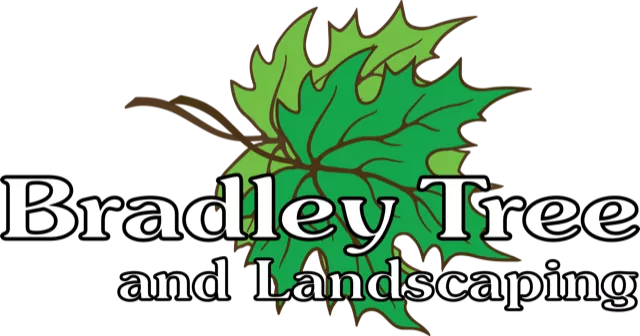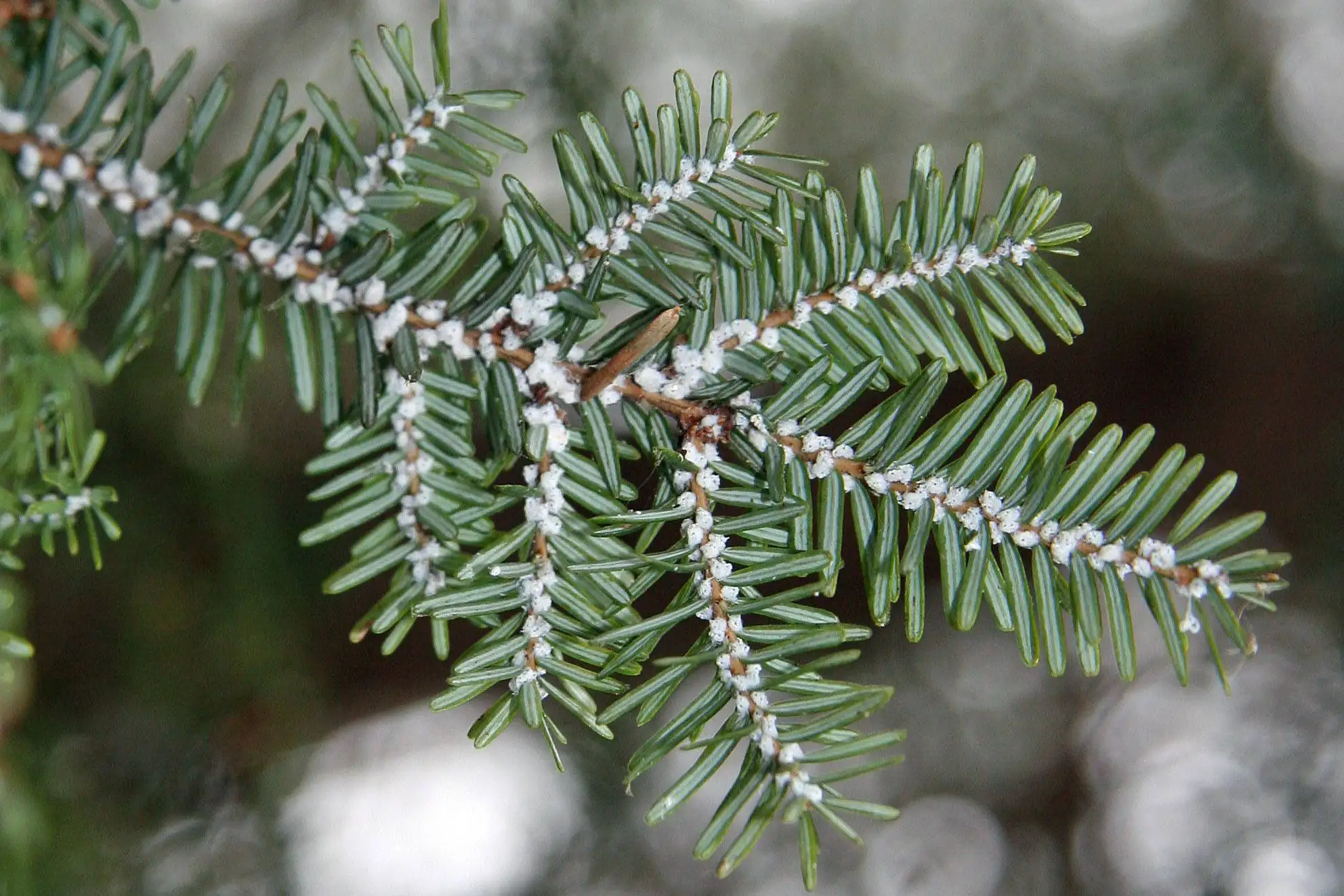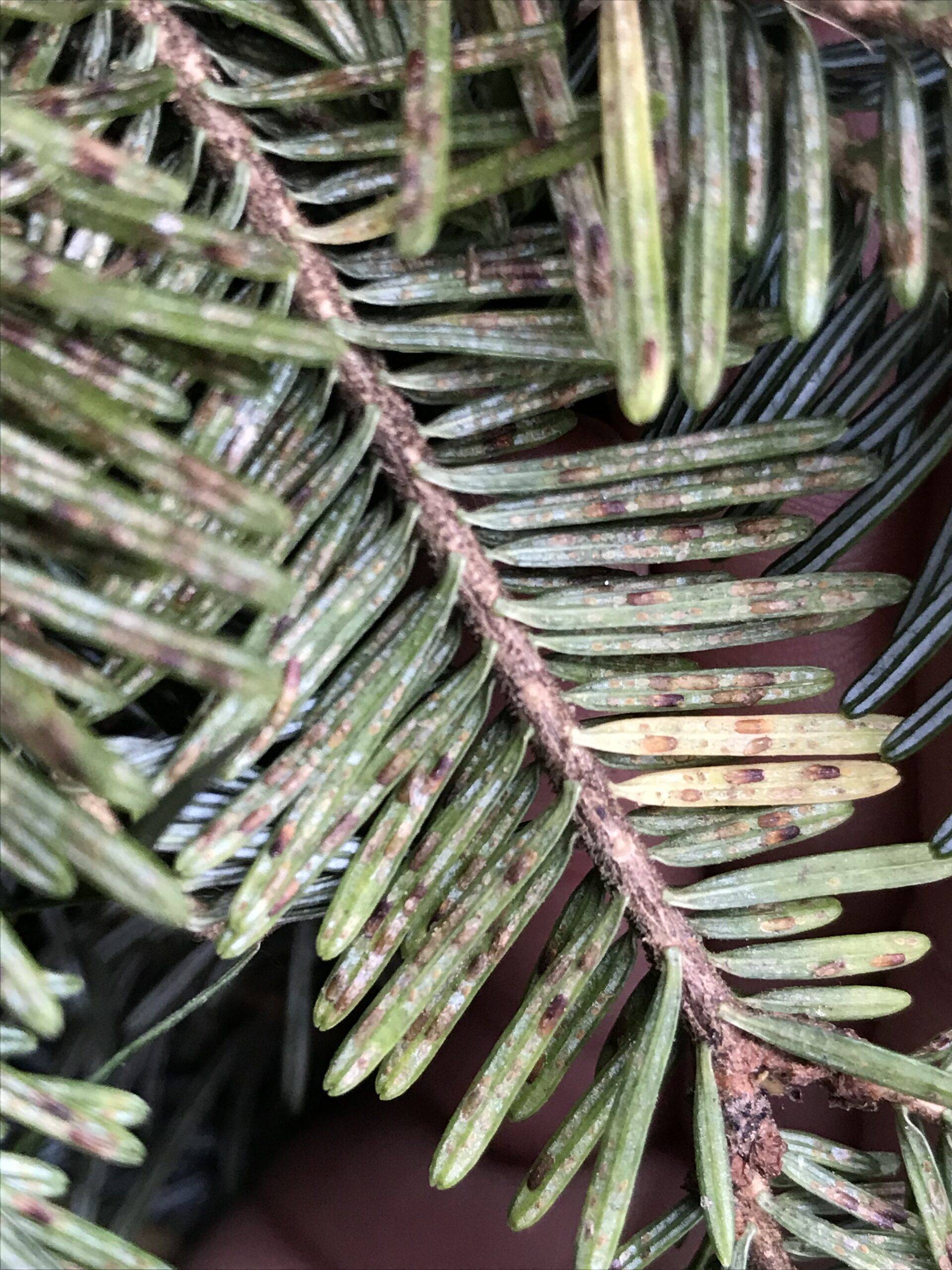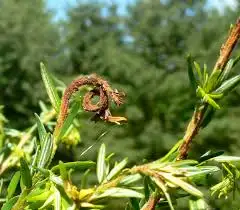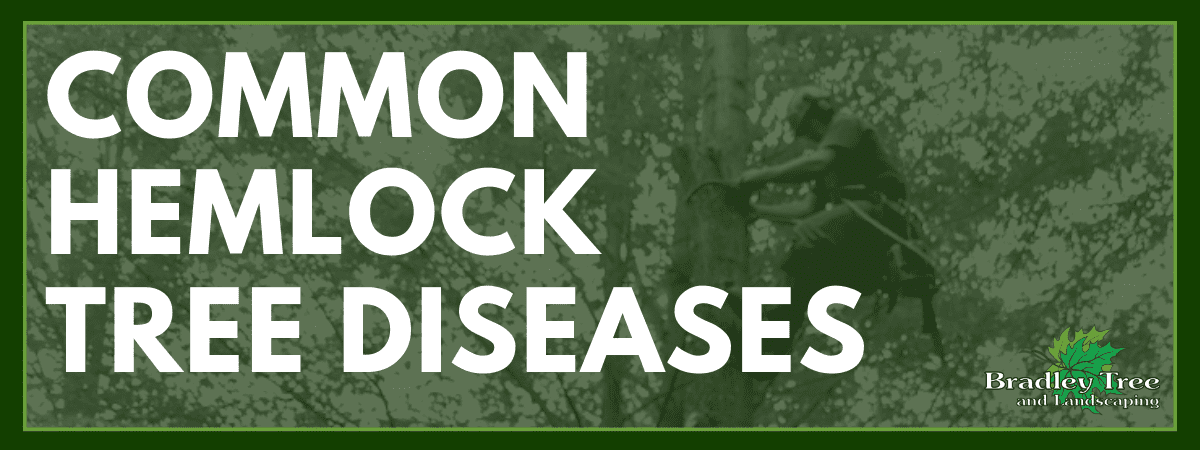
Common Hemlock Tree Diseases
Hemlock trees are vital to New York State ecosystems because they provide canopies for different bird species as well as deer and other critters. WNY has a few different types of hemlock trees, such as the Eastern Hemlock (Tsuga canadensis), and the Carolina Hemlock (Tsuga caroliniana). Eastern hemlock can grow typically from 40-70 feet tall, with some reaching 100 feet or more! By now you may have heard of Hemlock Woolly Adelgid, an invasive, aphid-like insect that threatens the hemlocks of WNY. We wanted to go over what that is, and some other diseases and pests that can threaten your lovely hemlock trees.
Here are some of the most common plant healthcare issues, diseases, and pests that can affect your Hemlock Trees.
Hemlock Woolly Adelgid
This invasive insect originated in Japan and destroys eastern and Carolina hemlock in forests from up in New England all the way down to North Carolina. It is one of the most prevalent issues we see here in WNY, and are constantly battling against.
The insect feeds on young twigs near where the needles are attached. Feeding kills new buds and causes foliage to desiccate. Desiccate means to remove the moisture from or cause it to become completely dry.
Unfortunately, this causes hemlock trees to die often within five years if untreated. It is extremely difficult to control in rural forests but can be saved in small batches around someone’s home or business.
Hemlock Rust Mites
This pest feeds openly on hemlock foliage. You will notice when the foliage turns from its normal dark green to a yellow color in the springtime.
They are tiny, smaller than spider mites, and are slow-moving cigar-shaped pests. It’s a cool season pest that is active in late winter and early spring, as well as the fall.
When conditions are ideal they can produce multiple populations in a season leading to a population explosion. They drain plant cells of their contents like chlorophyll.
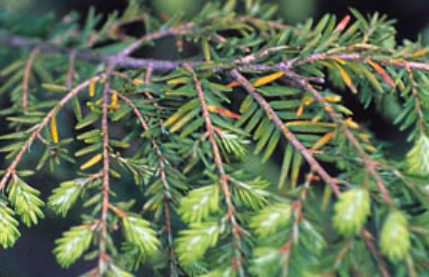
Source-https://content.ces.ncsu.edu/hemlock-rust-mite
Photo by Sandy Gardosik, Pennsylvania Department of Agriculture
Elongate Hemlock Scale
Elongate Hemlock Scale is a tiny insect with an oval hard cover, or “Scale.” Usually white or brown, the insect attaches to the underside of needles quite randomly.
This differs from Woolly Adelgid, which lines up where needles attach to the twig. The hemlock scale will also remove all the healthy juices of your hemlock, weakening it.
The one-two punch of scale and Woolly adelgid can be challenging to treat, and often hemlock scale can occur after drought or after HWA has been found locally.
Hemlock Borer
You may have heard of the Ash borer, but another beetle that may affect your hemlock is known as the hemlock borer. They are black, metallic sheen beetles that usually attack after a hemlock has already been weakened by other pests, disease or drought.
You’ll notice small oval holes, about 3mm in diameter where the beetles emerge from. You may also see bark chips piled at the bases of the tree, and if there’s a woodpecker that seems to really love your hemlock, it may be invested with hemlock borer larvae.
If left untreated, this will cause the tree to eventually deteriorate and die.
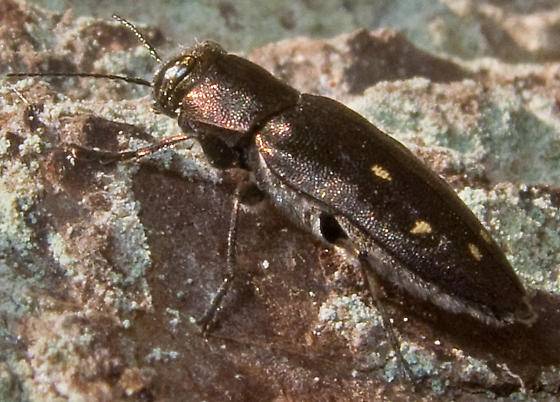
Source- https://bugguide.net/node/view/1082035 Photo Credit: Copyright © 2015 Seth Ausubel
Hemlock Tip Blight
This disease is caused by fungi which will be demonstrated during prolonged, cool, wet spring seasons. You will notice new growth curling and dying, and it may be covered with a gray mold from the fungus.
This will usually change when the weather changes but will cause affected tips to drop off.
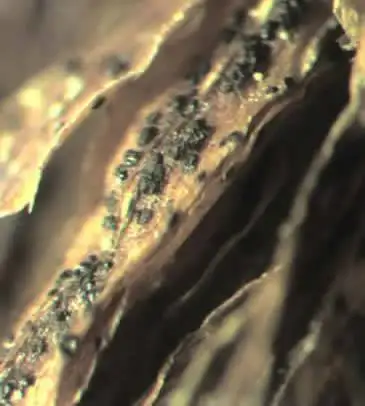
Source- https://www.maine.gov/dacf/mfs/forest_health/diseases/hemlock_tip_blight.htm Photo/Article Credit: William Ostrofsky, Forest Pathologist, Maine Forest Service
Hemlock Needle Blight
Another disease caused by fungus is hemlock Needle Blight. This will cause needles to turn brown and drop off, usually around the lower parts of the tree. You may first notice this in the spring, but dead tips can remain on the branches into summer.
It may not be significant at first, but can lead to twig and branch dieback. This usually occurs when it’s especially dry out, or when coupled with HWA.
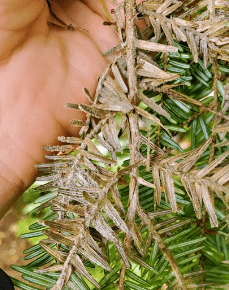
Source- https://site.extension.uga.edu/fannin-gilmer/2021/09/rosellinia-needle-blight-on-hemlock/ Photo Credit: Ashley Hoppers
Hemlock Twig Rust
Another disease caused by fungus, Hemlock twig rust can cause considerable damage. Symptoms will appear in May or early June. Infected needles will become orange or brown, and later curl as the fungus invades the vascular tissue. Cones that are infected can not produce seed.
This disease is also affected by weather conditions, due to a wet spring and cool weather.
Need Help? Have a Question About Your Hemlock?
Give Us a Call at 716-537-9129 or Fill out the form below and we will reach out to schedule a time for one of our arborists to come take a look. We will advise you on the diagnosis of your maple trees and the best course of action to ensure they are strong and healthy for years to come.
